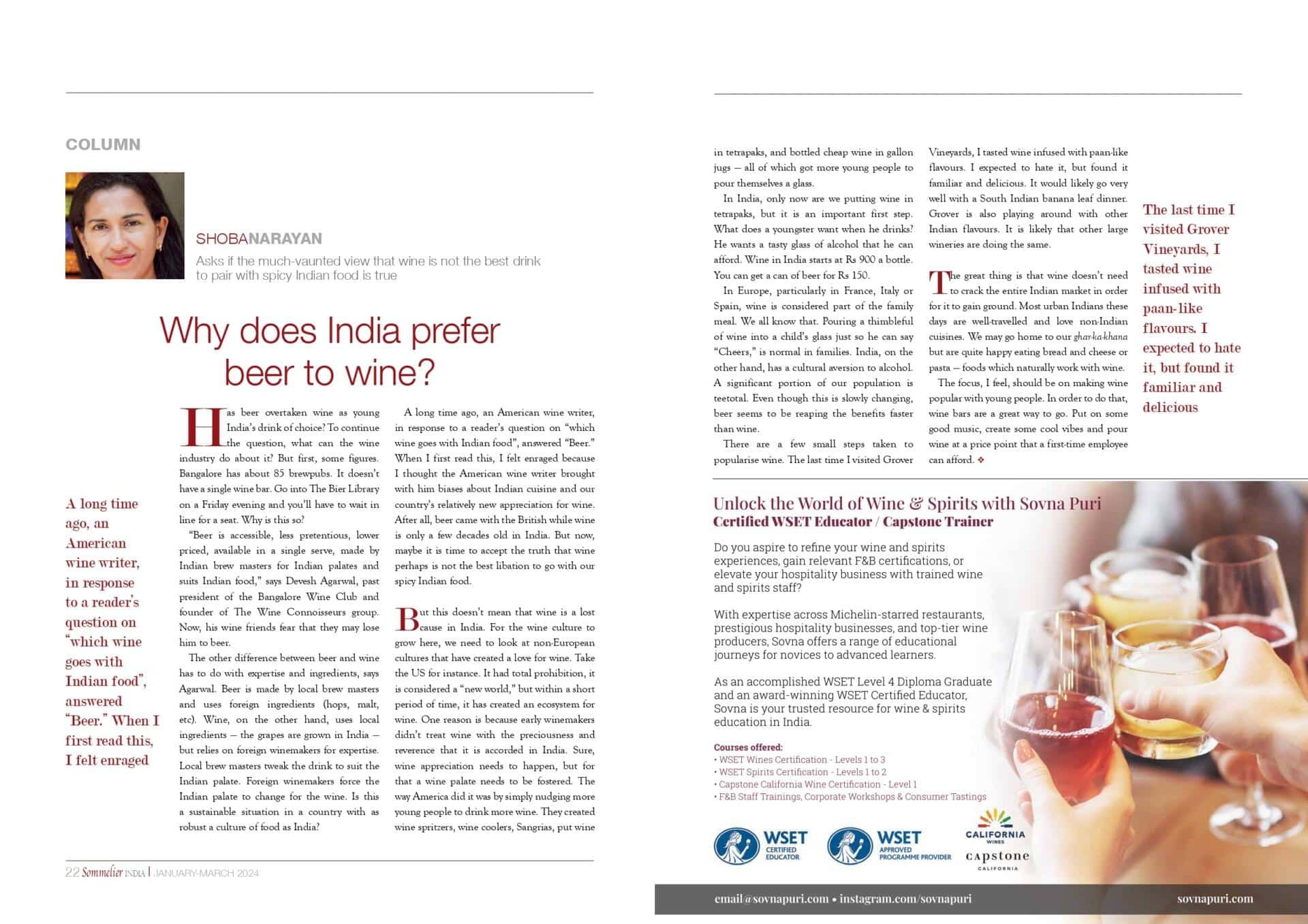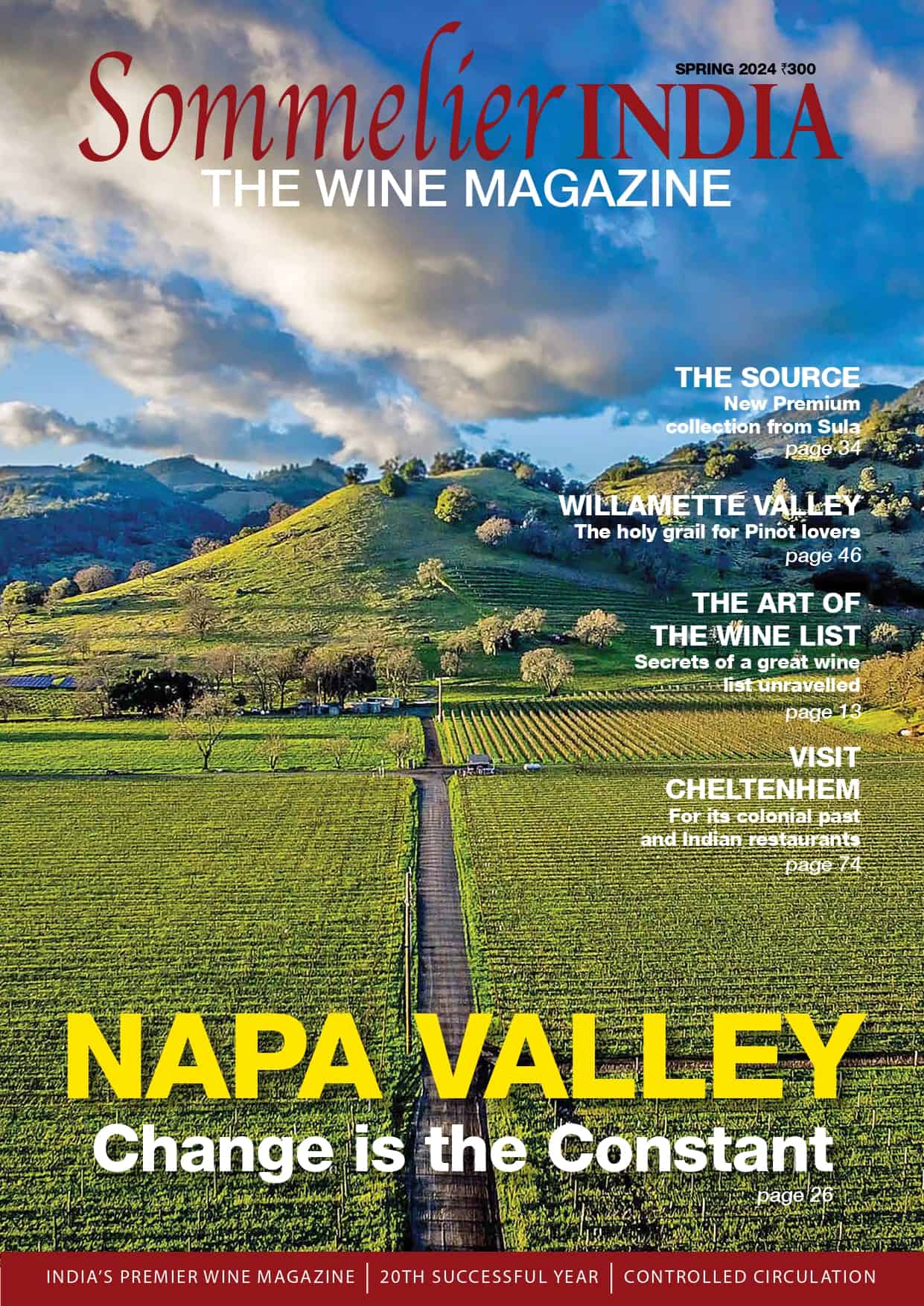But first, some figures. Bangalore has about 85 brewpubs. It doesn’t have a single wine bar. Go into The Bier Library on a Friday evening and you’ll have to wait in line for a seat. Why is this so?
“Beer is accessible, less pretentious, lower priced, available in single serve, made by Indian brewmasters for Indian palates and suits Indian food,” says Devesh Agarwal, who was past president of the Bangalore Wine Club and founded The Wine Connoisseurs group. Now, his wine friends fear that they may lose him to beer.
The other difference has to do with expertise and ingredients, says Agarwal. Beer is made by local brew masters and foreign ingredients (hops, malt, etc.). Wine on the other hand uses local ingredients– the grapes are grown in India, but relies on foreign winemakers for expertise. Local brew masters change the drink to suit the Indian palate. Foreign winemakers force the Indian palate to change for the wine. Is this a sustainable situation in a country with as robust a culture of food as India?
A long time ago, an American wine writer in response to a reader question on “which wine goes with Indian food,” answered “beer.” At that time, I felt enraged because I thought the American wine writer brought with him biases about Indian cuisine and our country’s relatively new appreciation for wine. After all, beer came with the British while wine is only a few decades old in India. So maybe it is time to accept the truth that wine perhaps is not the best libation to go with our spicy Indian food? But this doesn’t mean that wine is a lost cause in India.
For the wine culture to grow, we have to look at non-European cultures that have created a love for wine. Take the US for instance. It had prohibition, it is considered a “new world,” but within a short period of time, it has created an ecosystem for wine. One reason is because early winemakers didn’t treat wine with the preciousness that it is accorded in India. Sure, wine appreciation needs to happen but for that, a wine palate needs to be fostered. The way America did it was by simply nudging more young people to drink more wine. They created wine spritzers, wine coolers, Sangrias, put wine in tetrapaks, bottled cheap wine in gallon jugs, all of which got more young people to pour themselves a glass.
In India, only now are we putting wine in tetrapaks but it is an important first step. What does a youngster want when he drinks? He wants a tasty glass of alcohol that he can afford. Wine in India starts at Rs. 900 a bottle. You can get a can of beer for Rs. 150.
In Europe, particularly in France, Italy or Spain, wine is just part of a family meal. We all know that. Pouring a thimble of wine into a child’s glass just so he could say “Cheers,” was normal in families. India has a cultural aversion to alcohol. A significant portion of our population are teetotallers. Even though this is slowly changing, beer seems to be reaping the benefits faster than wine.
There are a few small steps. Last time I visited Grover Vineyards, I tasted wine infused with paan-like flavours. I expected to hate it but found it familiar and delicious. It would likely go very well with a South Indian banana leaf dinner. Grover is also playing around with other Indian flavours. It is likely that other large wineries are doing the same.
The great thing is that wine doesn’t need to crack the entire Indian market in order for it to gain ground. Most urban Indians these days are well-travelled and love non-Indian cuisines. We may go home to our ghar-ka-khana but are quite happy eating bread and cheese, or pasta, all of which naturally work with wine. The focus, I feel, should be on making wine popular with young people. In order to do that, wine bars are a great way to go. Put on some good music, create some cool vibes and pour wine at a price point that a first-time employee can afford.
How did each of us develop a wine palate? We started small, we started cheap and then experimented. It’s the only way to go. Smart wine producers ought to cater to that.










Nice learning, Shobaji! But not my cup of tea!